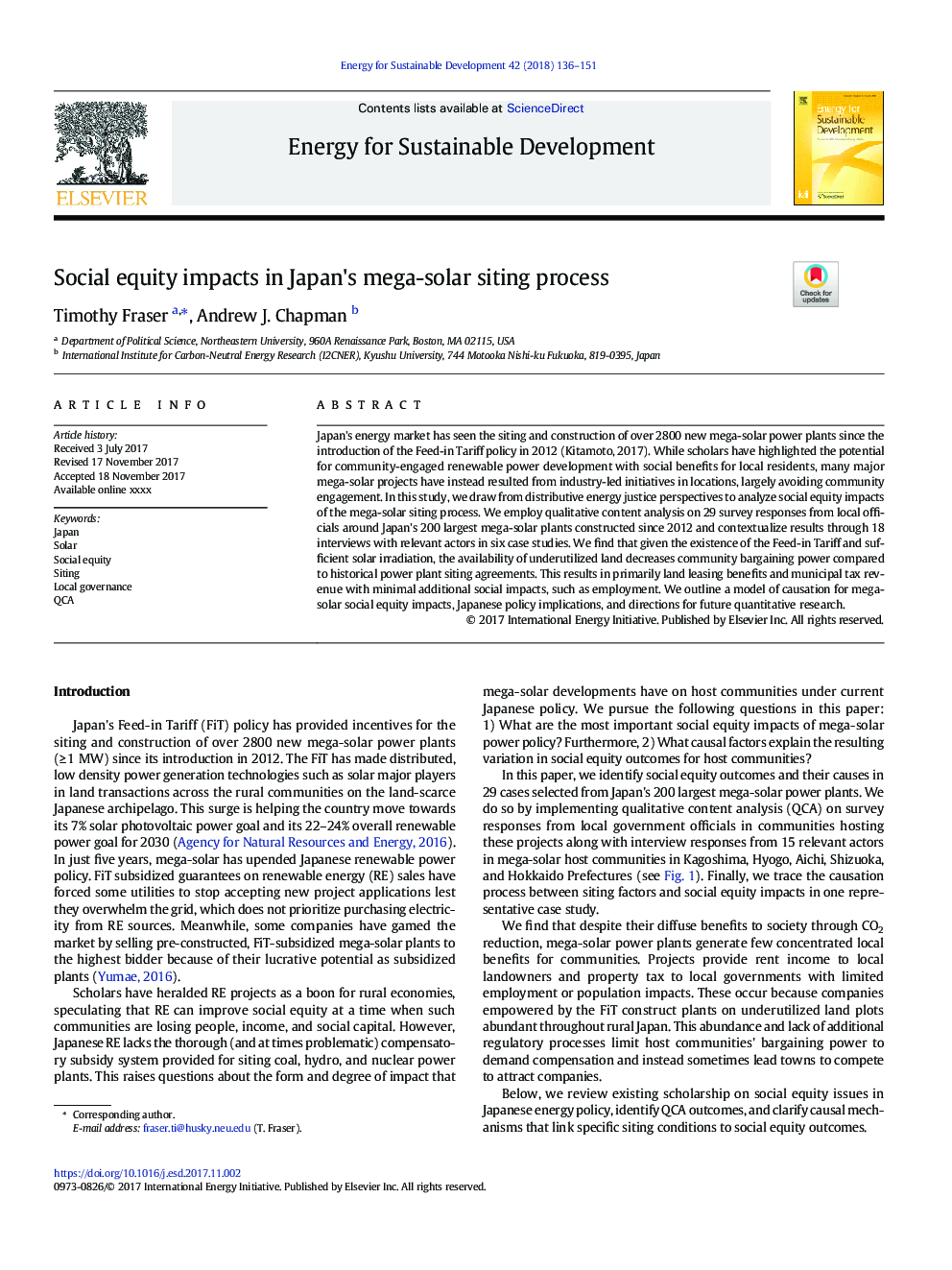| Article ID | Journal | Published Year | Pages | File Type |
|---|---|---|---|---|
| 7453712 | Energy for Sustainable Development | 2018 | 16 Pages |
Abstract
Japan's energy market has seen the siting and construction of over 2800 new mega-solar power plants since the introduction of the Feed-in Tariff policy in 2012 (Kitamoto, 2017). While scholars have highlighted the potential for community-engaged renewable power development with social benefits for local residents, many major mega-solar projects have instead resulted from industry-led initiatives in locations, largely avoiding community engagement. In this study, we draw from distributive energy justice perspectives to analyze social equity impacts of the mega-solar siting process. We employ qualitative content analysis on 29 survey responses from local officials around Japan's 200 largest mega-solar plants constructed since 2012 and contextualize results through 18 interviews with relevant actors in six case studies. We find that given the existence of the Feed-in Tariff and sufficient solar irradiation, the availability of underutilized land decreases community bargaining power compared to historical power plant siting agreements. This results in primarily land leasing benefits and municipal tax revenue with minimal additional social impacts, such as employment. We outline a model of causation for mega-solar social equity impacts, Japanese policy implications, and directions for future quantitative research.
Related Topics
Physical Sciences and Engineering
Energy
Energy (General)
Authors
Timothy Fraser, Andrew J. Chapman,
